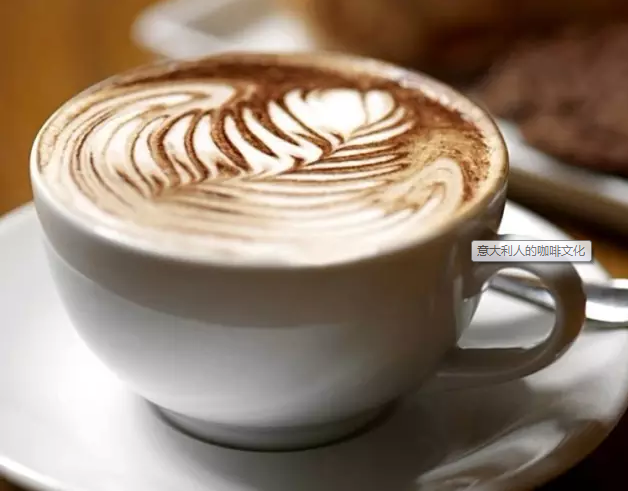The highest Standard of Coffee Culture: coffee Culture in Italy

Manuela Zaragoza, of Italian descent, has something to say to the global coffee chain: now, wherever you go, you can see Starbucks, but you can't see a Starbucks in Italy.
But then again, it was when Starbucks founder Howard Schultz was drinking coffee in a bar in Milan that he was inspired to build the coffee chain we now see.
You might say that he is just repackaging a good product and pushing it around the world.
But to many Italians, the menus offered by Starbucks and other coffee chains sound Italian, but the coffee offered by these coffee shops is far inferior to that of authentic Italian coffee.
I think it's time to reveal the truth. I'm of Italian descent. Like most Italians, I think Italy represents the highest standard of coffee culture, and all coffee should be measured by it.
Italians take the quality of their coffee very seriously.
Italian friends and family are angry that their cherished cappuccino coffee has been defiled, especially the practice of sprinkling a little hazelnut syrup and cinnamon on the coffee foam. I fully understand their feelings and absolutely agree with them.
At home, I have a mocha pot for making coffee, which is absolutely indispensable in Italian kitchens, just as an English kitchen cannot do without a kettle for making tea. As far as I'm concerned, cappuccino, latte and espresso offered by international coffee chains always taste charred bitterness, which is a shoddy imitation of authentic coffee.
Am I missing the point? Is my taste out of date and not catching up with the changing tastes of the global coffee market? Because at present, it seems that not only Italian coffee has gone abroad, but also the authentic taste of Italy has parted ways with coffee.
According to the International Coffee Organization, global coffee consumption has increased by nearly 42% since the beginning of this century. Therefore, we drink more coffee than ever before. This explains why many coffee chains have been expanding over the past few decades, but none of us drink coffee the Italian way.
"I think coffee all over the world these days is a ridiculous imitation of Italian coffee," concluded JamesHoffmann, the award-winning barista and owner of Square Mile Coffee Roasters, a square mile coffee shop in London. He belongs to a generation of trained baristas who are based on espresso and promote coffee innovation through sophisticated brewing methods.
"the current global coffee culture is a far cry from Italian coffee," Hoffman said.
For example, you can never ask for a latte in an Italian store. If you do, you have to get a glass of milk. You don't just ask for a cup of Italian coffee in the store; in fact, you just ask for a cup of coffee ("un caffe"). Because in Italian eyes, there is only one kind of Caffe, that is, Italian coffee.
In addition, there is Australia's "small white coffee" (flat white), which is somewhere between Starbucks latte and macchiato (latte requires 25ml to 35ml espresso, with lots of hot milk. Macchiato coffee requires 25ml to 35ml Italian coffee, with a small amount of milk foam. At present, "Little White Coffee" has gone global and has recently replaced the cappuccino on the Starbucks menu in some parts of the United States.
But the biggest difference is that Italians don't like to sit in an armchair in a coffee shop and savor a cappuccino while surfing the Internet. Instead, they prefer to stand in front of the marble bar of bars that can be seen everywhere in Italy and sip a cup of espresso.
"the coffee we drink is a ridiculous imitation of Italian coffee," James Hoffman said. "
However, when it comes to taste and brewing, Italy is trying to recover lost ground and has established the International Italian Coffee Institute (INEI) to protect the espresso culture.
The agency Luigi Luigi Zecchini wrote on its website that "international coffee chains are spreading and promoting that they serve espresso, but behind our coffee is a unique, non-replicable culture."
INEI even offers qualifications to those who firmly uphold the espresso tradition.
Can the Italians win the competition with such a move? I'm afraid it's hard, "because excellent baking techniques and good tasting procedures are becoming more and more international," warns Jeremy Challender, president of London's Prufrock Coffee Cafe and another award-winning barista.
In spite of this, many top baristas always scoff at the coffee offered by international coffee chains.
Hoffman of the Square Mile Cafe in London says it all depends on the roasting skills of the beans. Many chain stores roast coffee beans too dark, resulting in a bitter taste. The roasting color is too light, which can produce a stronger flavor, but if you don't master it well, the coffee will produce sour taste.
"I think, from this point of view, consumers can tolerate bitterness, but they can't tolerate more sour taste," Hoffman said. "as a result, big companies make mistakes because they are too cautious."
But it also depends on the raw materials of coffee beans, and in this respect, Italy's performance is not as good as that of many specialty cafes abroad. Part of the problem is that the price of "Italian coffee" is too low. In most Italian bars, a cup of coffee costs less than one euro. "such a low price cap means that Italian coffee ingredients are so commercialized that there is no option to buy more high-quality coffee at all," Hoffman added.
Italians drink cappuccino coffee in the morning
The way espresso is made is also limited. The single serving of Italian coffee in Italy is the standard 7 grams of ground coffee powder, almost no change. But professional coffee shops often use a larger amount of coffee powder, each cup of espresso ingredients 8 grams to 10 grams, resulting in a stronger flavor.
This view may be true, but I still think that I will insist on making coffee at home in my trusted mocha pot. I will continue to drink coffee in an Italian way.
This means having a cup of Italian coffee every morning and maybe after dinner, but certainly not cappuccino after 11:00 or any milk-based coffee after dinner. Because this method of drinking affects gastrointestinal digestion. All Italians know this.
Important Notice :
前街咖啡 FrontStreet Coffee has moved to new addredd:
FrontStreet Coffee Address: 315,Donghua East Road,GuangZhou
Tel:020 38364473
- Prev

What on earth is Korean coffee culture? What's so special about it?
South Korea's coffee culture is becoming more and more international. On the one hand, the Korean Coffee Show is one of the largest coffee festivals in the world, with 555 exhibitors (111of them from abroad) in 2015, with a total of 140730 visitors from around the world. On the other hand, if ordinary baristas from the United States, Australia or even Singapore are placed in Seoul, customers are likely to
- Next

The Development of American Coffee History-Coffee Culture in the United States
It is only natural that the tradition of cafes spread from London to the United States. The early cafes in the United States were modelled on those in London, but slightly more dignified than the latter. Like Mr. Lloyd's in London, cafes in the United States are great places to do business and spread information. There are even conference rooms for trials, auctions and dissemination of transactions.
Related
- How did the Salvadoran coffee industry develop in Central America?
- What exactly does the golden cup extraction of coffee mean?
- The Origin of Coffee flower
- [2023 Starbucks World Earth Day] there are more meaningful things besides free Starbucks coffee!
- What kind of coffee is there in Spain? 9 Flavors of Spanish Coffee
- Aromatic African coffee| Kenya's coffee culture and historical production area
- Liberica Coffee Bean knowledge: the characteristics of Liberian Coffee beans of the three original species of Coffee beans
- The origin and formula of Spanish latte introduces the taste characteristics of Bombon coffee in Valencia, Spain.
- How to adjust the solution of over-extracted coffee
- What is the tasting period of coffee beans? What is the period of coffee and beans? How should coffee wake up and raise beans?

